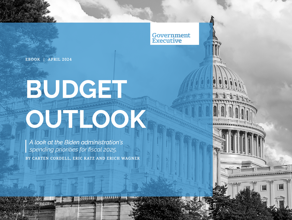Multiple-award contract spending on the rise, research firm says
Largest increases were outside GSA schedules.
Federal spending on multiple-award task-order contract vehicles exceeded $21 billion in fiscal 2007, a sizable increase from 2006, a recent research firm analysis shows.
Reston, Va.-based INPUT found that agencies spent 39 percent more through task order contract vehicles in fiscal 2007 than the previous year. The more than $6 billion increase brings the amount of money flowing through these types of contracts to more than 30 percent of federal technology spending.
Kevin Plexico, INPUT executive vice president, said in a statement that agencies continue to shift money to these task order vehicles for a number of reasons, not the least of which is convenience.
"They allow agencies to speed the acquisition process, avoid scrutiny and have more control over the vendors who are able to bid," Plexico said.
The largest increases were found in contracts that were not managed by the General Services Administration. GSA historically has been the go-to agency for multiple-award contracts, but agencies have recently been favoring their own indefinite-delivery, indefinite-quantity multiple-award contracts or non-GSA governmentwide acquisition contracts.
INPUT cited the Army's Communications and Electronics Command Rapid Response (CR2) and Navy's SeaPort contracts as examples of agency vehicles that have grown significantly. Spending on CR2, which provides engineering support and services, increased by nearly $1 billion in 2007. Spending on SeaPort, which also provides engineering support along with financial and program management services, jumped $1.6 billion. Spending on GSA vehicles increased 20 percent in 2007, rebounding from a slight decrease in 2006.
Steve Charles, executive vice president of the McLean, Va.-based immixGroup, recently compared NASA's GWAC Solutions for Enterprisewide Procurement with GSA's Schedule IT 70, for information technology acquisitions, in a Federal Market Update. Charles wrote that multiple-award contracting programs such as the GSA schedule or agency ID/IQ contracts "represent a faster, more reliable way for an agency to fulfill requirements by referencing pre-existing contracts rather than creating a standalone contract from scratch."
"The primary advantage for the government in using either of these contracting vehicles is that when ordering procedures are followed properly, orders are essentially protest-proof," Charles wrote.
Plexico believes that as spending on these contracts continues to increase, stakeholders and Congress could begin to keep a closer eye on how the vehicles operate and what effect they have on full and open competition.
"As agencies rely more and more on these types of vehicles, agencies should expect heightened scrutiny from Congress and the small business community concerned about the impact of these vehicles on competition," he said.
INPUT announced the results of its analysis on Thursday, but has not released a full report. The research group will present its findings at the federal technology spending forecast conference on April 24.
NEXT STORY: National health records network to expand



